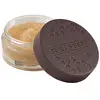What's inside
What's inside
 Key Ingredients
Key Ingredients

 Benefits
Benefits

 Concerns
Concerns

 Ingredients Side-by-side
Ingredients Side-by-side

Sucrose
HumectantSimmondsia Chinensis Seed Oil
EmollientIsononyl Isononanoate
EmollientHydrogenated Castor Oil
EmollientMolasses
Skin ConditioningEthylene/Propylene/Styrene Copolymer
Parfum
MaskingSilica
AbrasiveButyrospermum Parkii Butter
Skin ConditioningLimnanthes Alba Seed Oil
Skin ConditioningVitis Vinifera Seed Oil
EmollientTocopheryl Acetate
AntioxidantButylene/Ethylene/Styrene Copolymer
BHT
AntioxidantCitric Acid
BufferingPhenoxyethanol
PreservativeLimonene
PerfumingCitral
PerfumingBenzyl Alcohol
PerfumingSucrose, Simmondsia Chinensis Seed Oil, Isononyl Isononanoate, Hydrogenated Castor Oil, Molasses, Ethylene/Propylene/Styrene Copolymer, Parfum, Silica, Butyrospermum Parkii Butter, Limnanthes Alba Seed Oil, Vitis Vinifera Seed Oil, Tocopheryl Acetate, Butylene/Ethylene/Styrene Copolymer, BHT, Citric Acid, Phenoxyethanol, Limonene, Citral, Benzyl Alcohol
 Reviews
Reviews

Alternatives
Ingredients Explained
These ingredients are found in both products.
Ingredients higher up in an ingredient list are typically present in a larger amount.
Limonene is a fragrance that adds scent and taste to a formulation.
It's found in the peel oil of citrus fruits and other plants such as lavender and eucalyptus. The scent of limonene is generally described as "sweet citrus".
Limonene acts as an antioxidant, meaning it helps neutralize free radicals.
When exposed to air, oxidized limonene may sensitize the skin. Because of this, limonene is often avoided by people with sensitive skin.
The term 'fragrance' is not regulated in many countries. In many cases, it is up to the brand to define this term. For instance, many brands choose to label themselves as "fragrance-free" because they are not using synthetic fragrances. However, their products may still contain ingredients such as essential oils that are considered a fragrance.
Learn more about LimoneneSilica, also known as silicon dioxide, is a naturally occurring mineral. It is used as a fine, spherical, and porous powder in cosmetics.
Though it has exfoliant properties, the function of silica varies depending on the product.
The unique structure of silica enhances the spreadability and adds smoothness, making it a great texture enhancer.
It is also used as an active carrier, emulsifier, and mattifier due to its ability to absorb excess oil.
In some products, tiny microneedles called spicules are made from silica or hydrolyzed sponge. When you rub them in, they lightly polish away dead skin layers and enhance the penetration of active ingredients.
Learn more about Silica